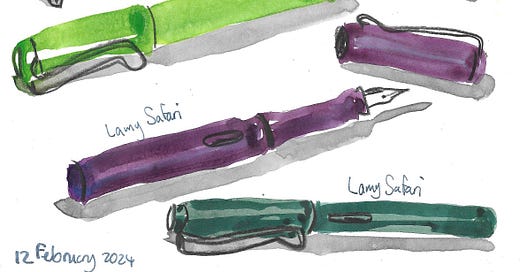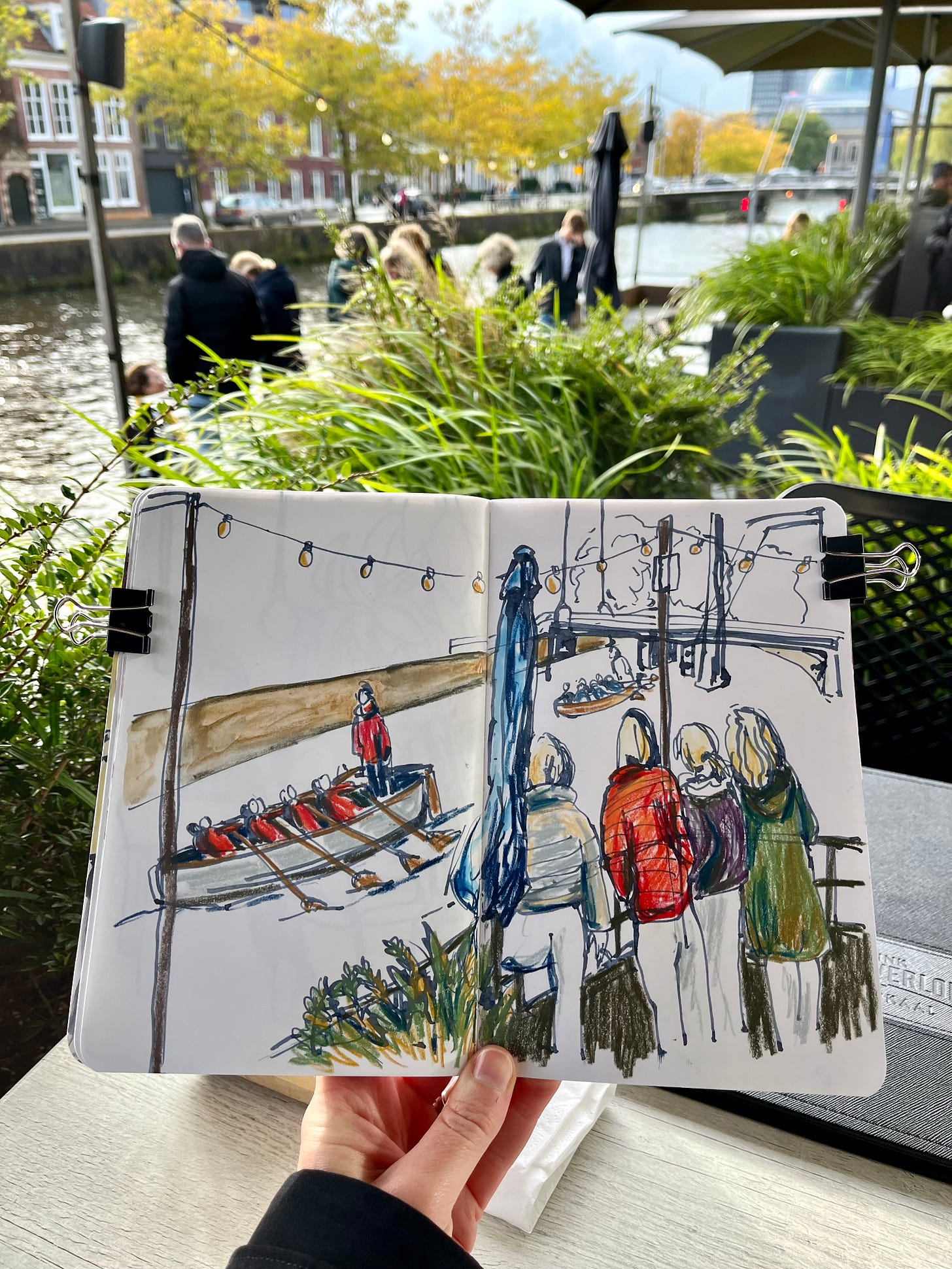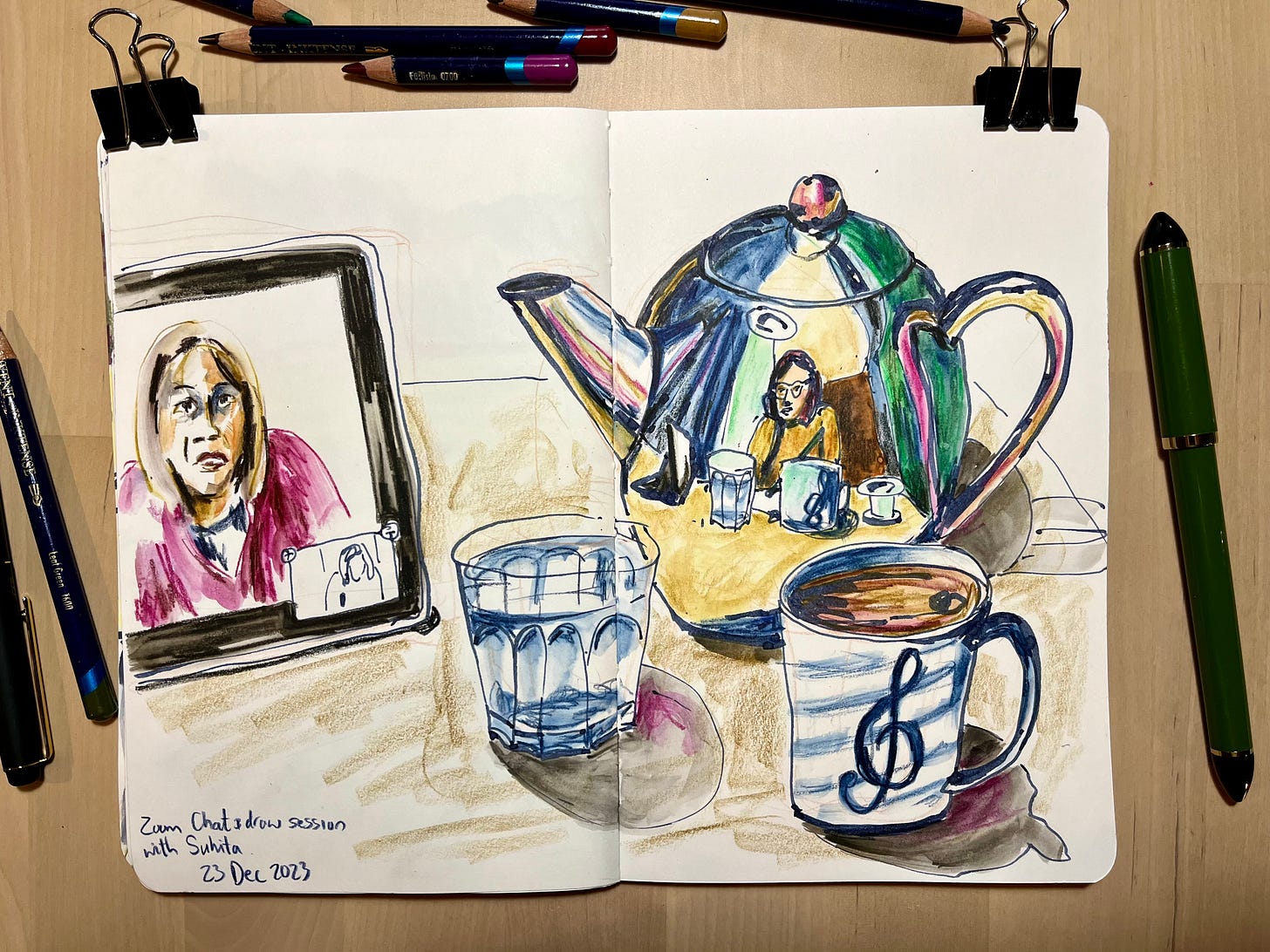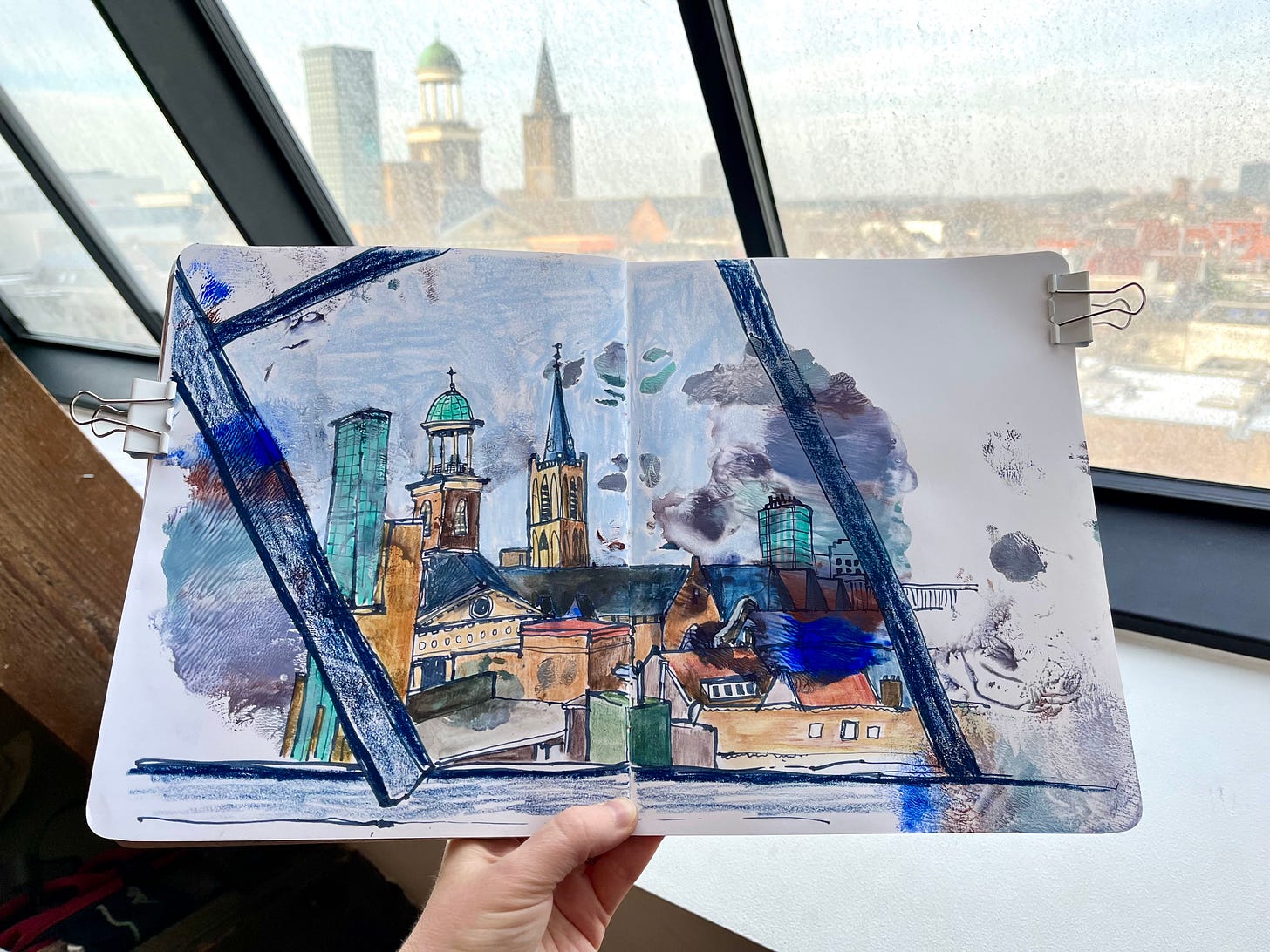Let’s talk fountain pens
With recent sketches and a video showing how I refill one of my pens
The collection
I still remember the day I bought my first fountain pen. I strapped my daughter into her seat on the back of my oma fiets1 and started our cold 30 minute cycle to Heemstede, just south of Haarlem, the Netherlands. Through the urban sketcher channels I had heard of this pen shop where you could buy almost any type of fountain pen and ink you could dream of. And as promised, it was a dreamy visit, and I walked out with my first Lamy fountain pen and a bottle of black De Atramentis ink. A year or so later I went back for another one with a thicker nib and a bottle of blue-grey ink, which has since become a favourite. The rest of my fountain pens all came as gifts from my dad. The green Lamy is one that he actually bought for himself, but ended up giving to me. The Sailor and Kuretake pens were gifts that he brought all the way from Japan which he visited during various business trips. The two Kuretake pens are technically brush pens and I am not completely sure whether they can be grouped with the fountain pens, but I use the same ink and similar refill converters in them as in my fountain pens, so I just group them together.
At first my petrol blue and purple Lamy pens were mainly used for sketching, but after a while I also started to use it for writing. I just love how easily the ink flows and how you don’t have to use as much pressure as with a ballpoint pen. My hands can feel the difference and I can write for much longer before I need to stretch them. They have since become my main tools for journalling, ideation, list making and any other form of writing I do on a daily basis.
The Sailor pens are both fude nib pens. Which means that the tip sits at an angle. Because of this you can get a variation of thick and thin lines, depending on how you hold the pen. The green one has a slightly thicker nib than the blue one, and can thus make thicker lines than the other. I love to use these to sketch on location, especially when sketching architecture and people.
I have recently started to draw with my brush pens more and more. I think it comes from all of the time that I have been spending sketching in nature where there are no straight lines. The brush pens simply work wonderfully for capturing the variety of lines and textures that nature throws at you.
How I refill my pens
Instead of using ink cartridges, I prefer to use converters that I fill with the fountain pen ink of my choice. Want to know how I do that and which inks I use? Here’s a short video for you:
Some recent fountain pen sketches
To end off this post, I would like to share three sketches that I recently made. The line work in all of them were done with my green Sailor fude nib pen using my favourite blue-grey ink. They were also all done on location from observation, thus true urban sketches.
This first one was done in Leeuwarden during a rowing race. While I was sitting on a terras, hiding from the rain under a parasol, the rowers came past in their big, wooden, “sloepen”. (See some photos at that link as I can’t seem to find an appropriate english word for this type of rowing boat. Imagine a rescue boat from the Titanic, but with only 6 to 10 rowers and one steersman.) It was cold, windy and raining, so I ordered some soup to keep me warm while I drew the scene.
This second sketch was done from the warm comfort of my own home during a zoom sketching session with Suhita Shirodkar’s ‘Draw Together Club’. I made myself a pot of tea to sip while chatting and drawing. The shiny teapot also happens to be a wonderful way to include myself and more of the room in the sketch.
This last sketch was made during a National Sketch Day of the Urban Sketchers Netherlands in January this year. We were more than 300 sketchers who met up at Utrecht’s huge public library to sketch. There was so much to see and to sketch throughout the building’s four stories. For one of the sketches I decided to draw the view from the top floor. I tend to shy away from drawing these big panoramic scenes, because they can quickly become overwhelming, but I really enjoyed this one. I think including the frame of the window somehow helped me to keep track of where I was in the sketch.
Why is it so much fun to chat about stationary and art supplies?! I am curious… do you use a fountain pen to draw or write with? Do you have a favourite ink that you gravitate to? Let’s continue the pen and ink chat in the comments.
For those who were wondering and asking - we are busy giving my website a big overhaul, so soon you will be able to flip through my sketchbook pages and also take a look at my paintings on there. I am really excited about it! Will keep you posted.
You can also now buy me a pencil to show your support for this newsletter.
Thank you for reading and thank you for looking.
May your ink pots never run dry!
Nino
Typical Dutch style bicycle












You might enjoy using twsbi too. They have overtaken the others to become my favourites. Twsbi eco in particular
My current heartthrob is a Moonman C4, Japanese eyedropper with a Naginata nib. The main thing is the nib, but I love clear pens. Its taking a moment to get used to occasionally refilling the baby reservoir, but I think it will ultimately take care of problem of burping ink with your normal eyedroppers. That said, the main thing is the naginata nib which gives a great variety of thicknesses. I love variable nibs like Fudes and Parallels, but this is usable for writing as well, which makes it winner for everyday carry.